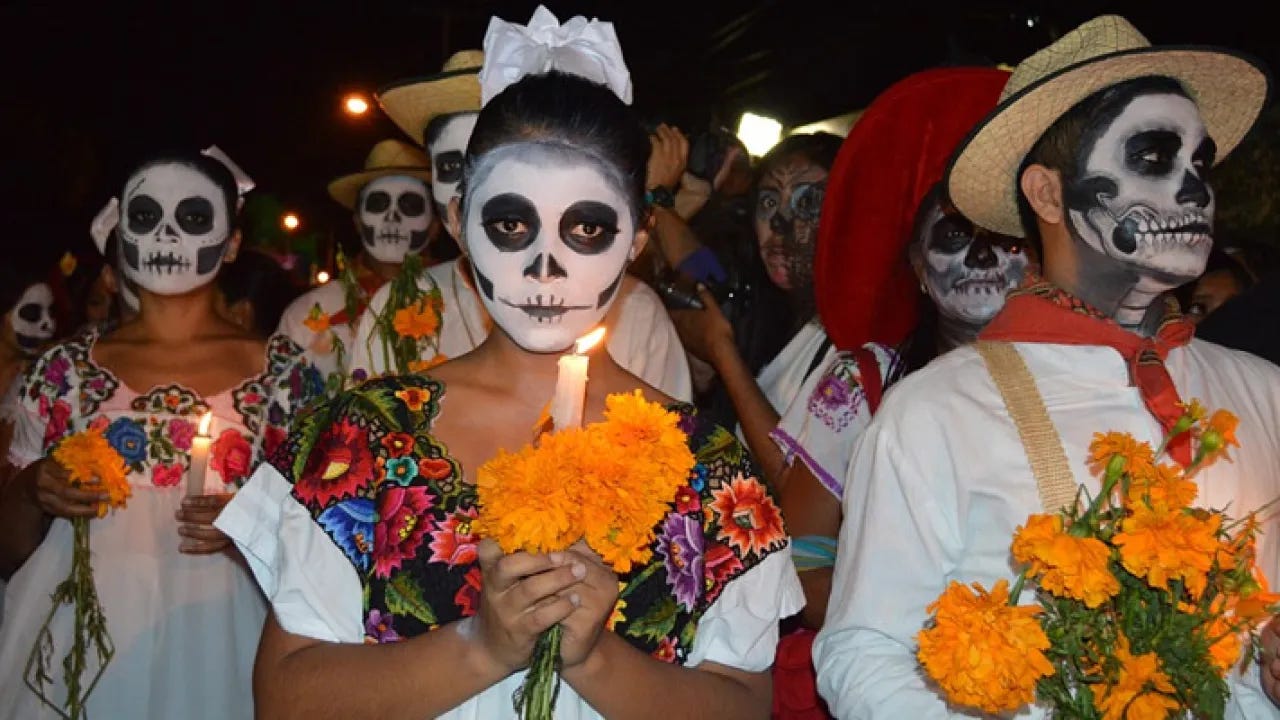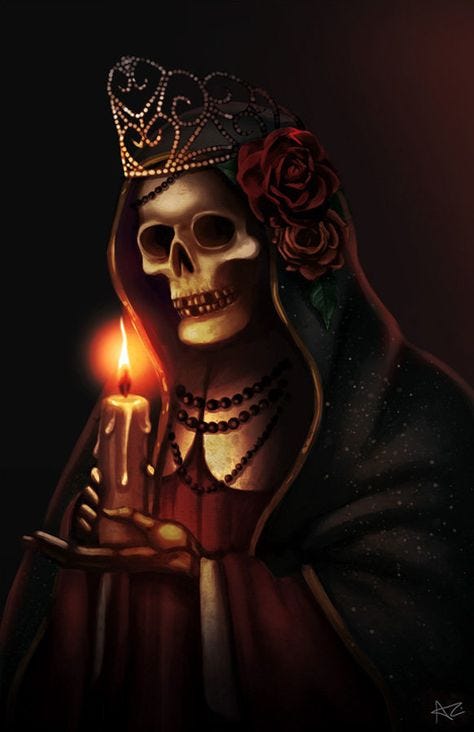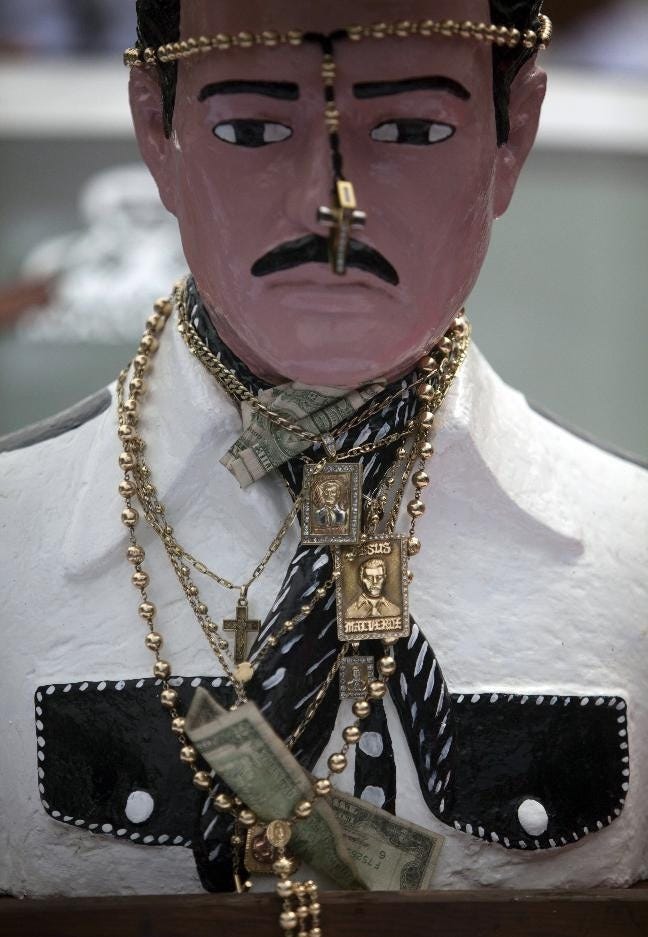The Many Saints of the Cartels
In parts of Mexico and the United States, some cartel members use dark spiritual forces to assist them. We take a look at some of the saints of the cartels.
As the calendar turns from October to November, many places around the world celebrate their own local traditions and customs. For many countries in Europe and Latin America, November 1st is celebrated as All Saints Day, where Christians and Catholics celebrate and remember the life of the faithful departed.
Similarly, November 2nd is observed by some Christian denominations as All Souls Day, which is a day of prayer and remembrance for all the martyred and departed saints, both known and unknown. In the Philippines, the days are merged and are observed with a Hallow Mass, often followed by families visiting the graves and tombs of deceased family members repairing any damage to the gravesite, and offering prayers, candles, flowers, and sometimes food.
A similar celebration exists in Mexico and elsewhere, known as “el Día de los Muertos” or Day of the Dead. Celebrated on November 1st and 2nd, it likewise remembers and honors the dead (usually family members) but often in a humorous and lighthearted way. This can include creating mock epitaphs for living friends and family. It is a time for celebrating with family and friends, exchanging small gifts, and eating traditional foods and treats such as candy sugar skulls, and a traditional bread known as pan de muerto.
Variations of these traditions occur in many Latin American countries as well as areas of the United States that have a large Mexican population such as Texas, Arizona, and California.
Santa Muerte
There is another tradition that has a darker connotation which is also celebrated on the first day of November. In the barrio of Tepito in Mexico City, thousands gather to venerate at the altar of a life-size image of Santa Muerte. Santa Muerte is a female representation of death, often depicted as a skeleton wearing a robe, and holding both a scythe and a globe.
Although Santa Muerte has been decried by the Catholic Church as well as several Protestant denominations as heretical and blasphemous, the cult of Santa Muerte has continued to grow. One of the reasons that the altar in Tepito draws so many people to it is because it was one of the first to be put out into the open. The shrine was built by Tepito resident Enriqueta Romero in 2001, outside her home, and was visible from the street.
Prior to this, those who belonged to the cult of Santa Muerte practiced their beliefs discreetly in private. After the shrine created by Romero and other subsequent shrines and altars were erected throughout Mexico the worship and veneration of Santa Muerte became more mainstream. On the first of November every year visitors to Romero’s shrine leave offerings such as candles, toys, money, cigarettes, alcohol, food, and personalized notes.
In local botánicas which sell religious items, people can purchase candles depicting the image of Santa Muerte. Different colors represent different properties or wishes that the person is seeking. Anything from health, love, finance, prosperity, etc.
Association with Criminals
According to police in both Mexico and the United States, there is a segment within the criminal underworld who take the worship of Santa Muerte deadly seriously. Often associated with the cartels, these criminals believe that Santa Muerte protects them from being captured or killed and allows them to get away with murder.
Police began to notice when they executed searches of suspected cartel members’ residences, they would often find makeshift shrines to Santa Muerte. Additionally, several were adorned with tattoos depicting Santa Muerte.
In 2011, police in Chicago dismantled a murderous drug crew that they claim was linked to at least 13 murders. At their trial, prosecutors claimed that the Santa Muerte death cult was the crew’s calling card. “They were a team and that was their team logo,” said Assistant State’s Attorney Nina Ricci.
In an interview with a former hitman for the Juárez cartel, “Edgar” recalls the culture shock when he moved from Kansas City to Juárez Mexico. Though he was a good student, Edgar began to hang with a bad crowd and started to deal drugs. He claims to have accidentally killed another boy with a rock when he was thirteen.
By this point, Edgar was in a gang, when he was sought out by the cartel and became an enforcer. Edgar claimed to have killed nearly 60 people. He says he prays to Santa Muerte before every hit and claims that she appeared to him in a dream and gave him wisdom. He said each hit he does is an offering to the deity.
It seems Edgar is able to compartmentalize his “job” from his regular life. He states; “I love persons, I kill persons.” “Don’t mix things. The love for my family is very different from my work.”
Cases such as Edgar’s and the Chicago crew are not isolated incidents. Mexican authorities have been seeing a link between the cartels and Santa Muerte worship for a while now, and it is increasingly spreading to the United States. In some cases, there have even been human sacrifices to Santa Muerte, and numerous shrines have been found with severed heads nearby.
Authorities say that the cartel members believe in the spirit realm, and offer sacrifices to Santa Muerte in exchange for money, power, success, and protection from rivals and law enforcement.
Jesús Malverde
The other main “Narco-Saint” is Jesús Malverde. The origins of Malverde are murky. His actual existence has not been historically verified, and it is speculated that he was created by combining two Sinaloan bandits, Heraclio Bernal (1855-1888) and Felipe Bachomo (1883-1916)
Malverde is said to have been born around 1870 in Sinaloa Mexico and began his life of banditry after the death of his parents. According to folklore, he was a Robin Hood type who would steal from the wealthy and corrupt elite and give to the poor, which made him beloved.
Malverde has been credited with performing several miracles and has numerous shrines dedicated to him throughout Mexico. Because of this iconic status, Malverde became a popular saint among narco-traffickers.
Sources:
Vincent, Isabel. “Santa Muerte and five more ‘religious’ saints worshiped by drug cartels.” New York Post, 21 December 2021, https://nypost.com/2021/12/21/religious-saints-of-murders-outlaws-worshiped-by-cartels/
Voeten, Teun & Engels, Maaike. “El Centro Field Note No. 1: Ciudad Juárez Prison Interview - Sicario Human Sacrifice to Santa Muerte.” Small Wars Journal, 20 October 2018, https://smallwarsjournal.com/jrnl/art/el-centro-field-note-no-1-ciudad-juarez-prison-interview-sicario-human-sacrifice-santa
Schmadeke, Steve. “How a brutal Chicago gang and its cult of death left trail of murder.” Chicago Tribune, 10 May 2017, https://www.chicagotribune.com/news/breaking/ct-santa-muerte-defendants-20170509-story.html







